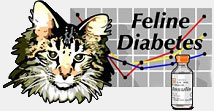Hello and welcome to the LBL forum!

Here's your first post from the Main/Welcome forum for continuity:
https://www.felinediabetes.com/FDMB/threads/new-member-zephie.294370/
All free feed, including Zephie. I know he had breakfast this morning and I also give some canned food with his pills. I'm not sure how much he ate during the day, but probably less than usual. Could this cause the extended low in Cycle 1 today?
Yes, numbers can keep dropping without food. When you see that happening, you want to offer him some food to slow the drops. Bounce breaking cycles can also have later nadirs. Some cats nadir at the end of the cycle when breaking a bounce.
2. I assume I should defer to the AlphaTrak for his BG?
Yes, we have found that the Libre can read much lower - especially in the normal range. We suggest verifying Libre lows (or any wonky readings) with a meter.
3. Internist says not to give the PM dose unless BG is at least 250. So given that his PMPS was at most 143 on the AT, I wasn't going to give a PM shot. Thoughts on that?
With SLGS we do not shoot below 90. For new members who do not have a lot of testing data, we suggest not shooting below 150 or 200, but encourage members to gradually lower their no-shoot number as they get used to shooting lower and lower preshots. Lantus is very good at giving flat cycles when you shoot low. You will also find that the preshot value often does not determine how a cycle will play out. Like you saw this morning, a cat can start a cycle at 400+ and drop to double digits and start in double digits and zoom up to over 300/400!
Here is the section on how to handle lower preshot numbers from the
Dosing Protocols sticky:
"
How to handle a lower than normal preshot number:
Until you collect enough data to know how your cat will react, we suggest following the guidelines in the
FDMB's FAQ Q4.4:
Q4.4. My cat's pre-shot level was way below the usual value. Should I give the injection?
A4.4. There's no hard and fast rule, but if you don't have data on how your cat responds to insulin, here are some general guidelines.
- Below 150 mg/dl (8.3 mmol/L), don't give insulin.
- Between 150 and 200 (8.3-11.1 mmol/L), you have three options:
- a.) give nothing
- b.) give a token dose (10-25% of the usual dose)
- c.) feed as usual, test in a couple of hours, and make a decision based on that value
- Above 200 (11.1 mmol/L) but below the cat's normal pre-shot value, a reduced dose might be wise.
- In all cases, if you are reducing or eliminating insulin, it's wise to check for ketones in the urine.
- Above the normal pre-shot value, give the usual dose, but if the pre-shot value is consistently elevated, it's a good idea to schedule a full glucose curve to see whether a change in dose or insulin is appropriate. In most cases, the target "peak" value should not be below 100 mg/dl (5.6 mmol/L), and for some cats it might be higher.
Keep in mind these are general guidelines, and
they should be personalized to your own cat's response to insulin. If your experience is that your cat does not became hypoglycemic with a dose which is close to her usual, then personal experience should be your guide.
With experience, you may find that lowering these thresholds may work well for your cat. When you have reached that stage, the following guidelines are suggested for Lantus, Levemir, and Biosimilars users following the Start Low Go Slow approach:
If the preshot number is far below usual preshot numbers:
- Do you need to stay on schedule? Then skip the shot.
- Do you have some flexibility with your schedule? Then stalling to wait for the number to rise might be a good option. Don't feed, retest after 30-60 minutes, and decide if the number is shootable.
- Repeat until the cat either reaches a number at which you are comfortable shooting, or enough time has passed that skipping the shot is necessary.
If the preshot number is near kitty's usual preshot numbers:
Look at your data to see what numbers you have shot in the past and decide what would be a safe, shootable number for your cat. Don't feed. Stall until kitty reaches the preshot number you've decided on and then shoot.
We usually don't suggest or recommend shooting a preshot number less than 90 mg/dL when following the SLGS Method. Remember that with SLGS, generally speaking, your goal is to achieve flat numbers that are greater than 90 mg/dL. However, let experience, data collected, knowledge of your cat, and availability to monitor help in making the best decisions for your cat.
If kitty is dropping faster or lower than you'd like, please see "
Don't Panic! or How to Handle Low Numbers" and post for help or suggestions."
4. Any advice on what to do to help the guy? I feel like an utter failure on trying to get him regulated.
You aren't a failure at all! You are dealing with a lot of other conditions. The numbers of newly diagnosed kitties can be all over the place. It takes time to get them regulated.






